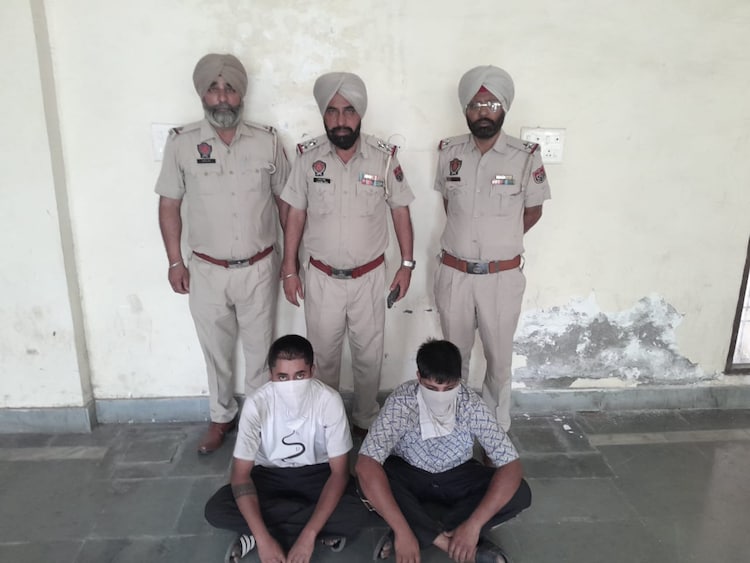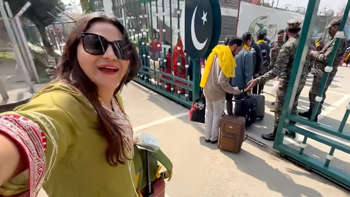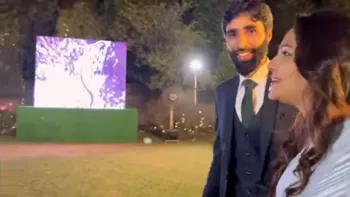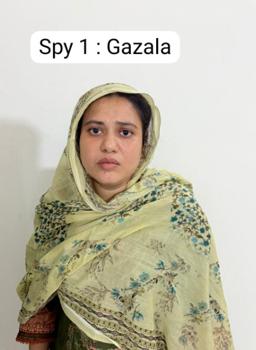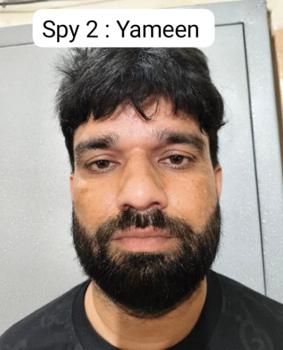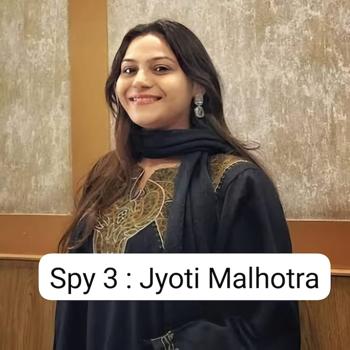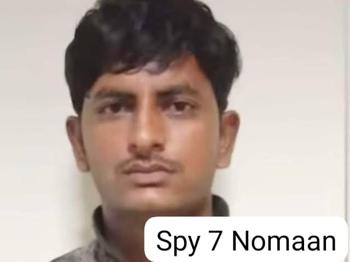From YouTuber to Spy: Haryana’s Jyoti Malhotra Exposed in Pakistani Spy Ring with Danish, Shakir & Rana Shahbaz
Social Media Star to Suspected Spy
How a Popular Travel Vlogger Became an Alleged Asset in a High-Stakes Intelligence Operation
In a shocking turn of events, Jyoti Malhotra — a Haryana-based YouTuber known for her travel videos under the channel "Travel with JO" — finds herself at the center of a major espionage scandal. Accused of leaking sensitive information to Pakistan, Malhotra’s arrest has sparked widespread concerns over how easily influencers can be manipulated into becoming tools of foreign intelligence.
Malhotra, who had previously shared videos of her trips to Pakistan including visits to temples and luxury buses, is now under police custody. Authorities claim she was gradually cultivated as a long-term asset aimed at engaging in what experts describe as "narrative warfare" — shaping public opinion through subtle propaganda.
The Mysterious Diplomat Behind Her Alleged Recruitment
A Pakistani Official Who Sparked a Chain of Espionage Links Across India
Central to this unfolding saga is a man known by the alias Danish, whose real identity is Ehsan-ur-Rahim — a former Pakistani official stationed at the High Commission in New Delhi. Malhotra reportedly met him during a visa-related visit in 2023. Their friendship quickly turned into frequent communication over secure apps like WhatsApp, Snapchat, and Telegram.
Authorities allege that Danish introduced Malhotra to key individuals during one of her visits to Pakistan. These meetings, allegedly arranged by his associate Ali Ahwan, involved conversations with Pakistani security and intelligence officers. To mask her activities, Malhotra saved contact details under fake names — one being 'Jat Randhawa.'
The diplomat in question was later expelled by India on charges of espionage — just days before Malhotra’s arrest.
Sponsored Trips and VIP Treatment
A Deeper Look Into the Financial and International Ties of the Accused
Investigators are now digging into Malhotra’s financial records, which include transactions and allegedly sponsored trips to Pakistan and China. She reportedly received VIP-level hospitality during her travels — further solidifying suspicions of her being treated as a strategic investment by Pakistani handlers.
The police have begun following the money trail, aiming to determine the extent of the funding behind these trips and whether they were part of a broader intelligence operation.
Not an Isolated Case
Over a Dozen Arrested Across Multiple States in an Expanding Espionage Network
Malhotra’s arrest was only one among a series of detentions made in the wake of the April 22 Pahalgam terror attack. The aftermath saw Indian forces launch Operation Sindoor, which led to the unraveling of an extensive espionage web across Haryana, Punjab, and Uttar Pradesh.
Here's a summary of key suspects:
Guzala (Punjab) – A 31-year-old woman accused of sharing sensitive military details with Pakistani operatives in exchange for money transferred via UPI.
Shahzad (Uttar Pradesh) – Allegedly engaged in cross-border smuggling and espionage after multiple visits to Pakistan.
Falaksher and Suraj Masih (Punjab) – Reportedly sent photographs of army cantonments and air bases to ISI.
Yameen Mohammad (Malerkotla, Punjab) – Accused of receiving online payments from Pakistan to pass along sensitive data.
Sukhpreet and Karanbir Singh (Gurdaspur, Punjab) – Found in possession of ammunition and mobile phones used to transmit details on troop movements.
Nauman Ilahi (Panipat, Haryana) – A security guard accused of relaying intelligence to Pakistan.
Devender Singh (Kaithal, Haryana) – A student who allegedly uploaded weapon photos and remained in touch with PIOs after a religious pilgrimage.
Armaan and Mohammad Tarif (Nuh, Haryana) – Both are believed to have maintained long-term communication with Pakistani handlers via social media.
Each individual had varying roles — from couriering information and smuggling to intelligence gathering — but their collective participation points to a highly organized and expanding spy network.
The Role of Social Media in Modern Espionage
How Platforms Are Being Weaponized to Target the Young and Influential
The common thread among many of the accused, especially Jyoti Malhotra, is their active presence on social media. With over 400 videos and nearly four lakh subscribers, Malhotra used platforms like YouTube as both a career and, allegedly, a cover.
Police officials warn that influencers are now becoming key targets for foreign operatives, especially those whose content involves travel or public commentary. Their reach, combined with their perceived neutrality, allows them to subtly shift public opinion — a tactic now recognized as psychological or information warfare.
A Father's Shock and Denial
The Family Left in the Dark About an Influencer’s Double Life
In a statement to authorities, Jyoti Malhotra’s father expressed disbelief and confusion. He said he was unaware of her frequent trips to Pakistan or the real nature of her online activities. “She told us she was going to Delhi. I didn’t even know she had a YouTube channel,” he admitted.
This reflects how secretive and isolated such covert activities can become, even within families. Friends and relatives often remain unaware of an individual’s alternate life in the digital or intelligence sphere.
Looking Ahead
A Wake-Up Call for National Security and Digital Vigilance
The arrests have forced national security agencies to rethink their approach to modern espionage. Today’s spy might not wear a uniform or carry encrypted briefcases — they may simply be uploading travel vlogs or sharing thoughts on social media.
The use of digital tools like Telegram, WhatsApp, and UPI payments has added layers of complexity, enabling covert communication and financial transactions with ease. Investigations are now underway to examine digital footprints and network structures that may lead to even more revelations.
As the story unfolds, one thing is clear — India’s national security is being challenged not just on the battlefield, but in the digital world as well.
